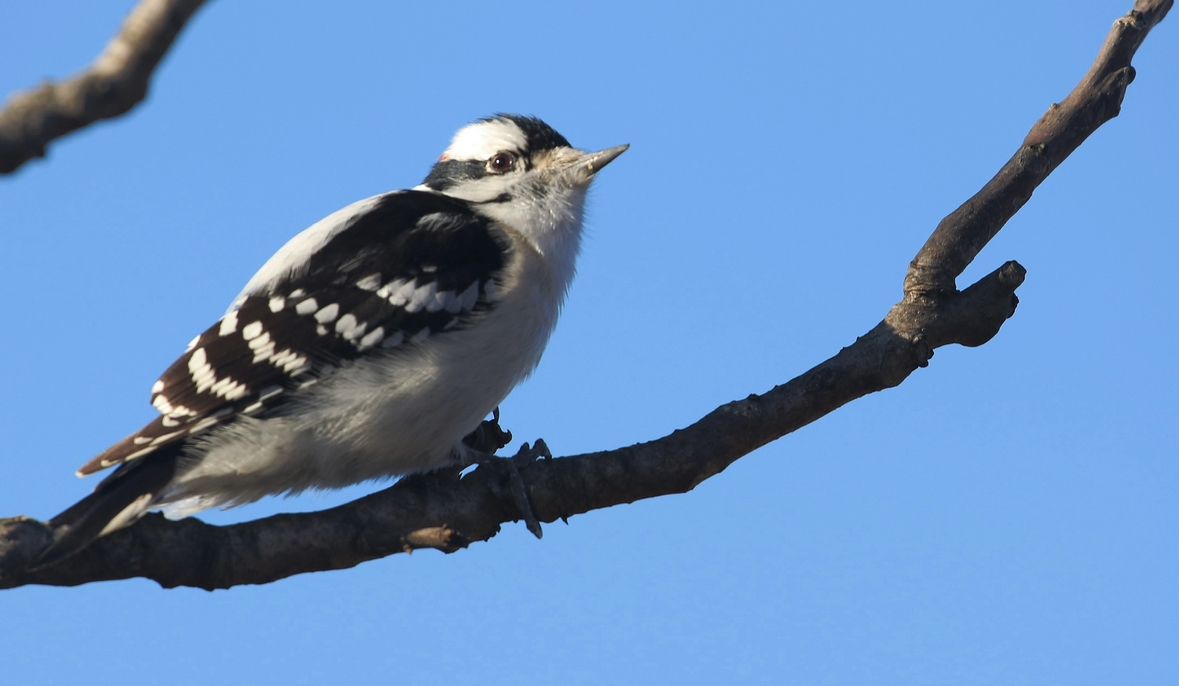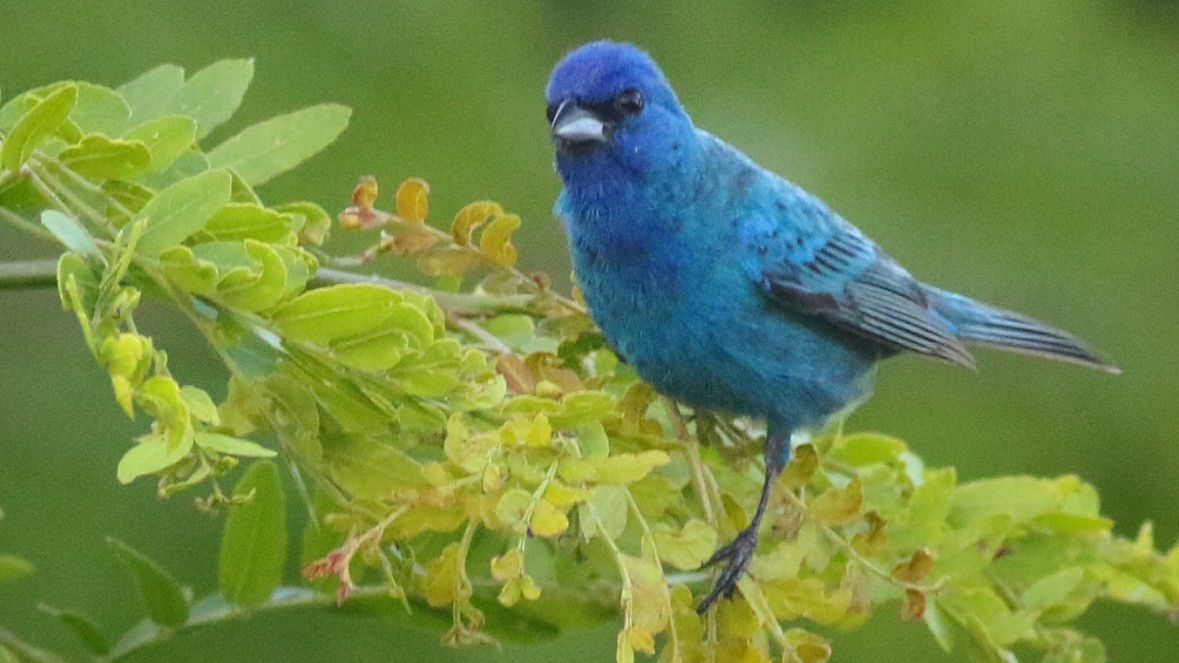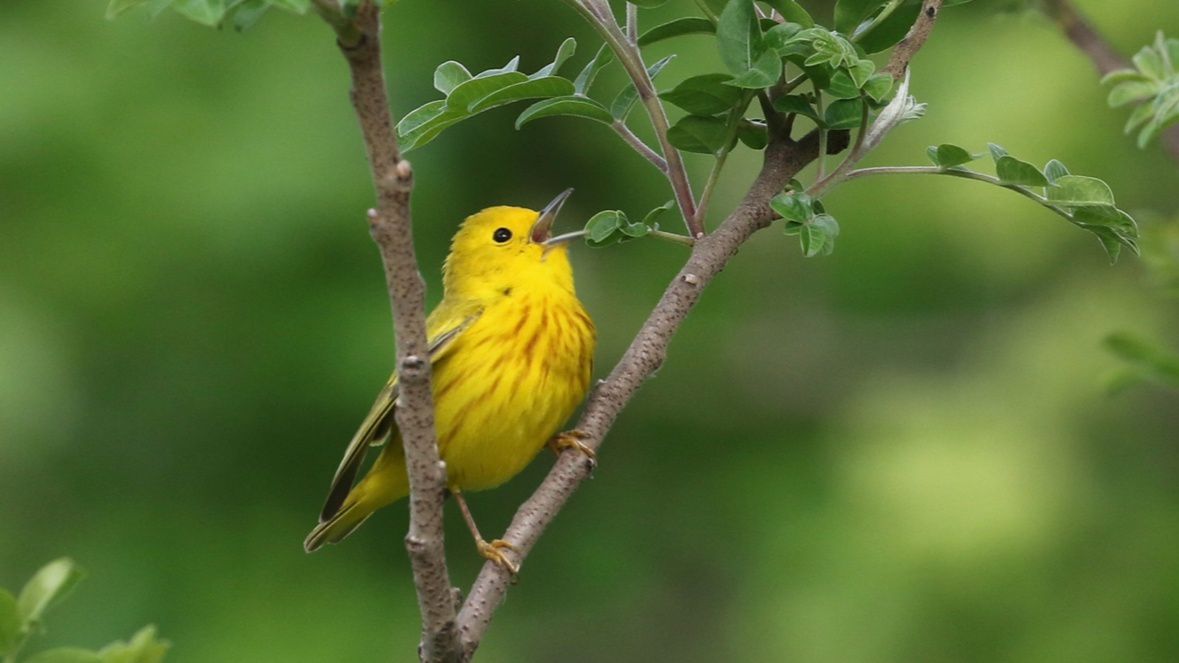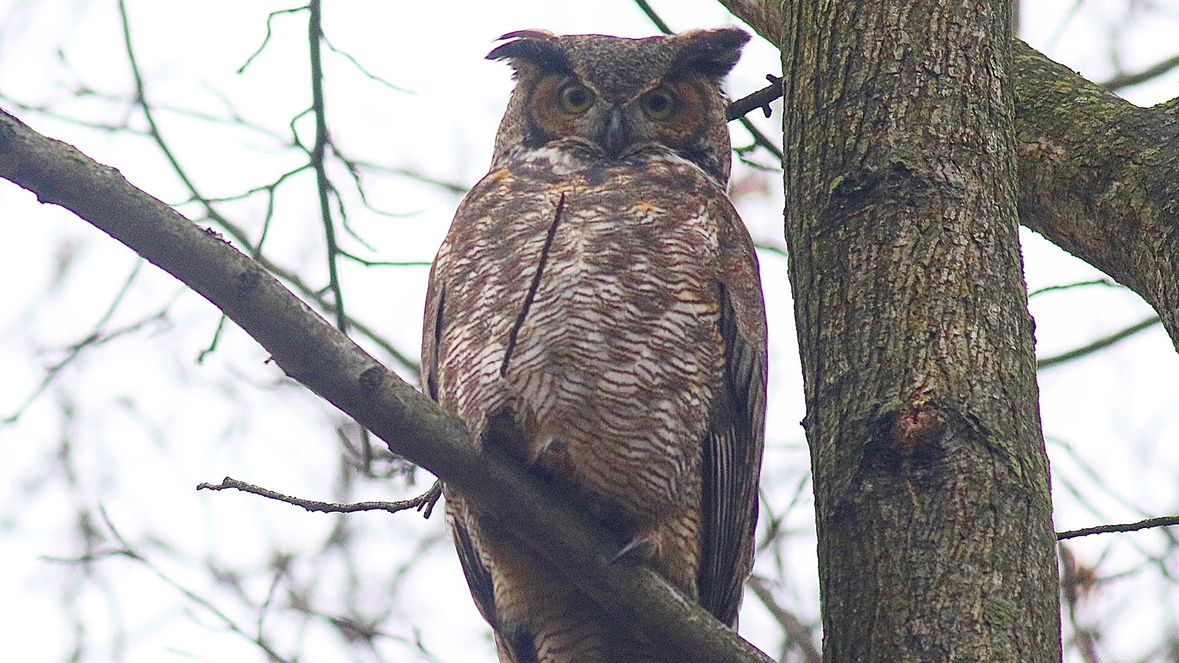Each week, summer campers at the Children’s Aid Goodhue Community Center grab their binoculars and head out for a walk in nature. They help document the hundreds of species that make their way through the 26 acres of woodlands surrounding them.
Kids may quickly encounter several house finches eating at feeders set up by Anthony Ciancimino, a public school teacher and avid birder who leads the science program at the summer camp, and runs after-school programs during the school year.
“It’s a small bird with a reddish belly,” Ciancimino said.
Ciancimino first started birding when he was about seven years old and received a bird feeder as a gift. Within minutes of filling it, he identified a visiting downy woodpecker.
“That was my spark bird, so to speak,” he said. “Ever since that, I’ve been birding as much as I can, and I try to instill it in the kids here.”
As the group walks into the adjacent Goodhue Park, where Ciancimino has recorded nearly 200 species over the years, there’s plenty to see in the trees, and overhead.
“Oh listen, I hear — look up high, I see some chimney swifts,” he said as he guided the campers.
There are the usual suspects: lots of American robins, the squawk of a bluejay hidden in the trees.
It’s the favorite bird of several campers, including Grady Morris. “I like its variety of blue colors,” he said.


And there are less common visitors, too — at first heard, but not seen.
“I hear a water thrush, Louisiana waterthrush. That’s a type of warbler. They’re migrating through here right now,” Ciancimino said.
The group spends much of the walk seeking out the waterthrush, sometimes using a bird call to try to attract it.
“Yes, we’re looking at these birds. They’re beautiful. They’re like eye candy. But it’s more than that,” Ciancimino said of the experience the children were having. “They’re going out. They’re being at peace, they’re being quiet and it’s giving them patience. And they’re being mindful of their surroundings.”
Eventually, patience and mindfulness are rewarded.
“There it is. Right in front of us,” Ciancimino said as he spotted it.
“We kept hearing and so we were just, we were trying to like keep catching it, but we, we couldn’t see it for a while,” camper Savanna Graham said. “But we finally found it by the pond. So that’s why it’s called a waterthrush.”
For the campers, the weekly walks with Ciancimino are an opportunity to learn about everything they see in the woods, the sky and the water around them.
“We see like the bugs and the animals and the birds,” camper Emma Brown said.
“I learn something new every day,” Madeline Livolsi said. That day, her new fact was that catbirds get their name from their call, which sounds like a cat.
“He teaches us about the trees,” camper Jackson James added. “Like we ask him, ‘Is that poison ivy?’ He’ll know.”


For Ciancimino, it’s an opportunity to share a beloved hobby.
“It really warms my heart that kids, you know, at this age are finding a liking to this hobby because we need more young people like that. And especially for the future. For the future generations to show awareness and conservation for everything that lives around us,” he said.
The camp is winding down for the summer, but families who want information about attending next year, or to learn more about Goodhue’s after-school programs, can reach out to the Children’s Aid Society.
Students are accepted on a first-come, first-served basis. The city funds spots for 150 elementary school students, but there is a camp fee for middle schoolers and families needing longer days.
Adults who want to learn more about birds on Staten Island are in luck — Ciancimino leads walks for the NYC Bird Alliance, formerly known as the Audubon Society. Those walks will ramp up during the coming fall migration, and can be found on the alliance’s online calendar.



